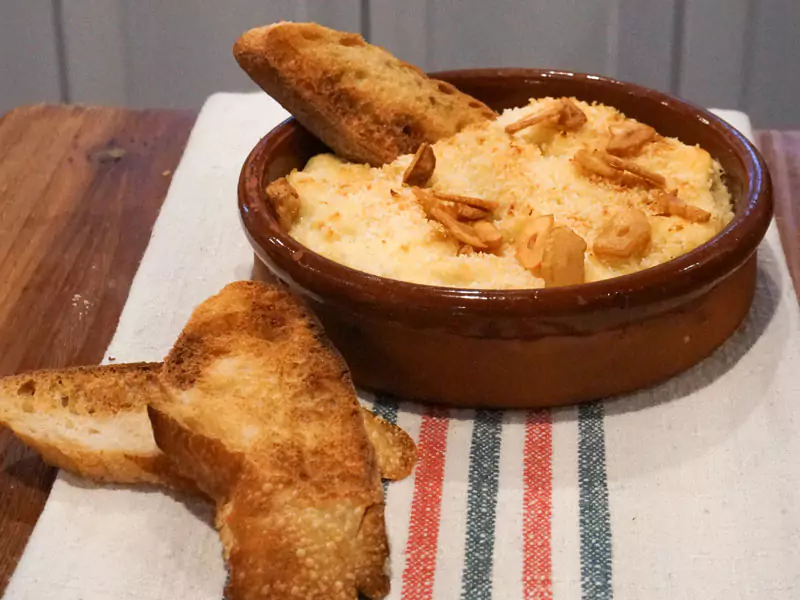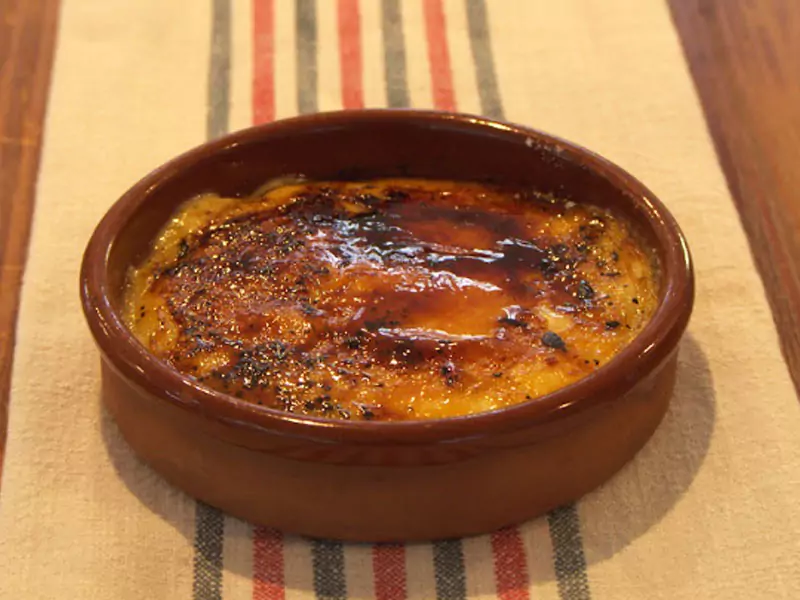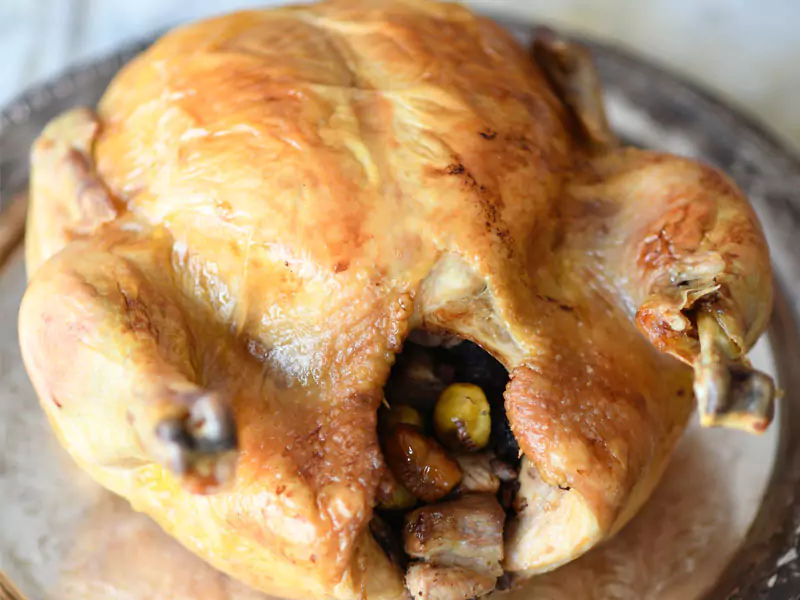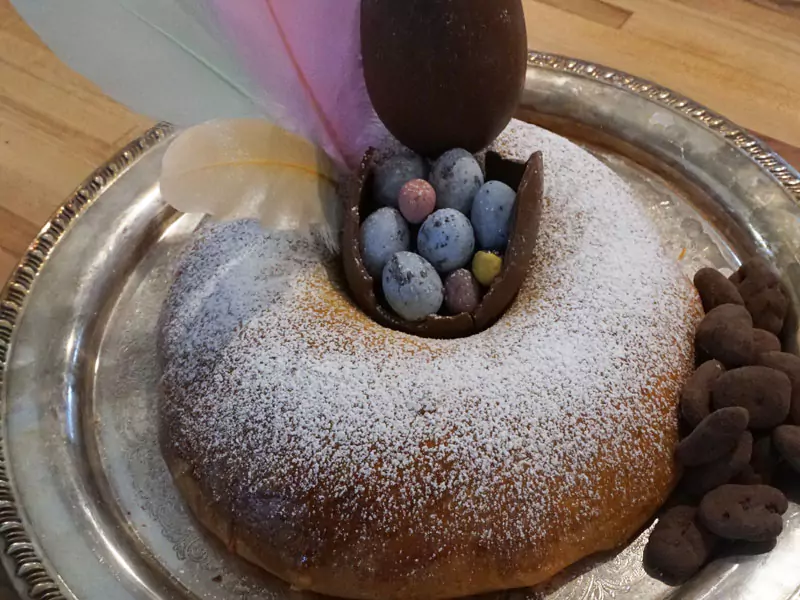Brandada Dip
First prepared in Occitan kitchens (Nîmes), this simple dish is a creamy, uniform spread that combines warm oil and milk, chopped salt cod (skinned and deboned), and garlic. Some versions also incorporate boiled potato.
In the past, this spread was made by hand using a pot and wooden spoon, or a mortar and pestle, pouring in the liquids in a fine stream and mixing in the rest. In fact, the dish gets its name from the Occitan verb for stirring, brandar, which captures the grinding movement of the pestle.
Catalonia eagerly adopted the dish, giving it the nation’s own flair. There are several local varieties, some of which are still part of our gastronomic culture today.
TRADITIONS
Roman Catholic and Eastern Orthodox Church canons dictate certain days of fasting and abstinence, including the Nativity Fast on Christmas Eve, or the longer St. Martin’s Lent, in order to prepare followers for Christ’s arrival on December 25th. The custom of eating salt cod on Christmas Eve emerged from this religious observance. To make it a more solemn occasion, they would add the show-stealing truffle, specifically the winter black truffle, and call it the brandada de dol, or the “salt cod spread of mourning.” I really enjoy this version and, if you try it and are a truffle defender like me, you’ll never have it any other way.



